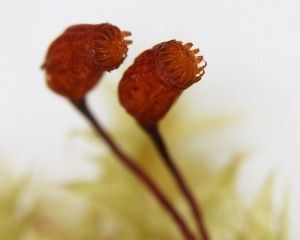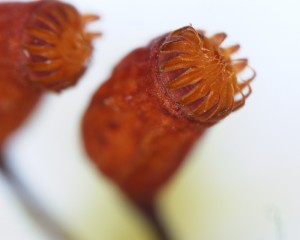Habitat
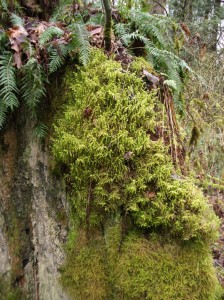 Rhytidiadelphus triquetrus can usually be found in well-drained sites of coniferous forests, on cliff shelves, boulders, and logs, occasionally epiphytic on tree trunks, or sandy-gravelly soils in beaches and streamsides of forests. It grows terrestrially on humus-rich substrates and is less common in lowland rainforests. It can sometimes be intermixed with H. splendens, R. loreus, and Kindbergia.
Rhytidiadelphus triquetrus can usually be found in well-drained sites of coniferous forests, on cliff shelves, boulders, and logs, occasionally epiphytic on tree trunks, or sandy-gravelly soils in beaches and streamsides of forests. It grows terrestrially on humus-rich substrates and is less common in lowland rainforests. It can sometimes be intermixed with H. splendens, R. loreus, and Kindbergia.
Gametophyte
Overall Structure:
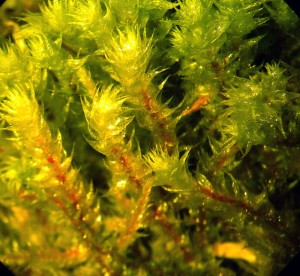 Rhytidiadelphus triquetrus has a pleurocarpous growth form. Groups form loose mats of coarse, interwoven and branched shoots.
Rhytidiadelphus triquetrus has a pleurocarpous growth form. Groups form loose mats of coarse, interwoven and branched shoots.
The stem is red, while the the leaves are yellow-green in color.
Leaf Structure:
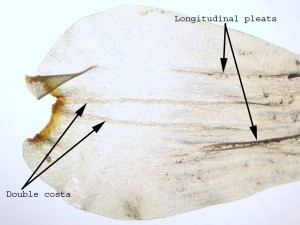 Leaves are pleated and wrinkled and have a double costa. The costae do not extend the whole length of the leaf.
Leaves are pleated and wrinkled and have a double costa. The costae do not extend the whole length of the leaf.
The lamina cells are elongate and the leaf margins are toothed. The marginal cells are not otherwise differentiated from the rest of the laminal cells.
Stem:
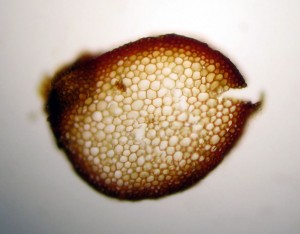 The stem has a central conducting strand, a cortex of parenchymal cells, and an epidermis of stereids.
The stem has a central conducting strand, a cortex of parenchymal cells, and an epidermis of stereids.
Sporophyte
 Sporophytes are red-brown when mature. Maturation typically occurs in the spring.
Sporophytes are red-brown when mature. Maturation typically occurs in the spring.
Sporangia:
Seta:
The seta is sometimes bent near the apex at maturity, resulting in a nodding sporangium.



